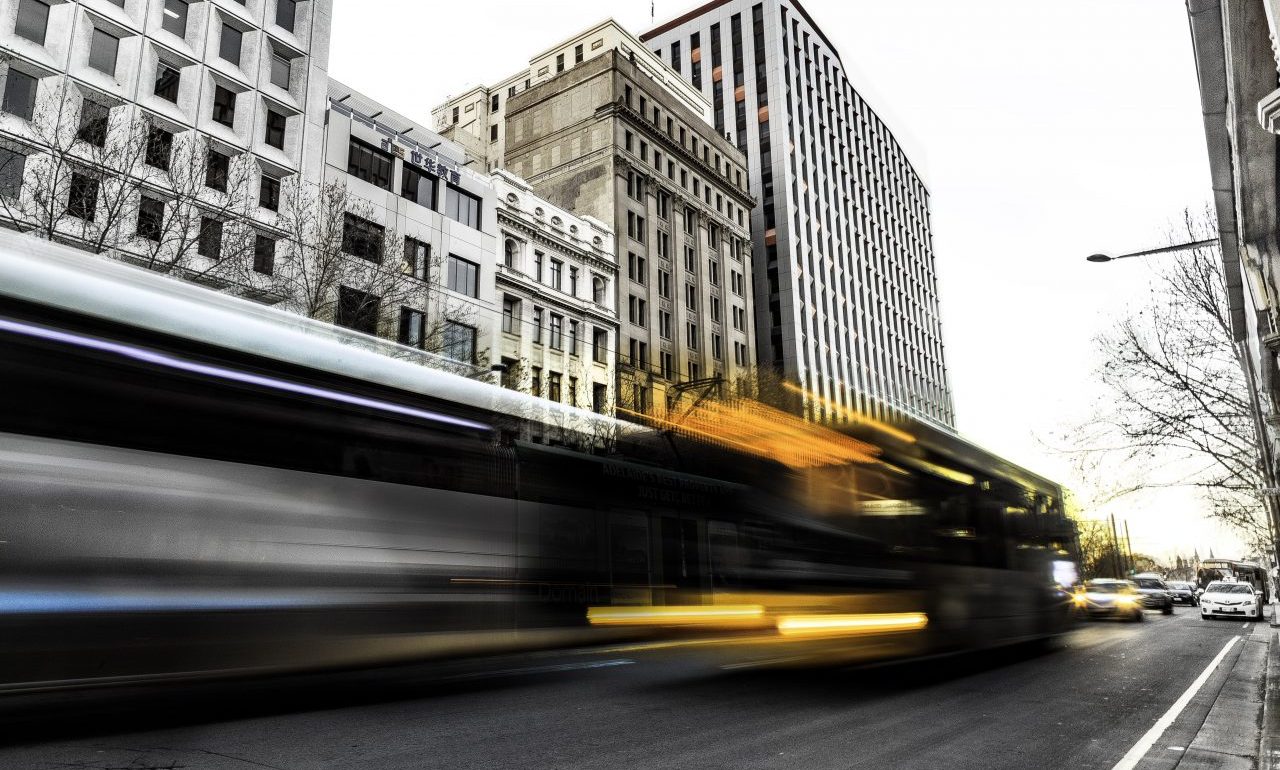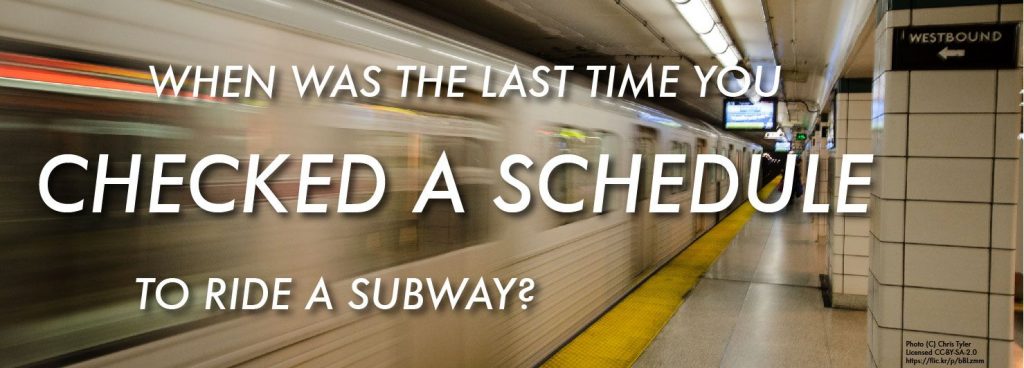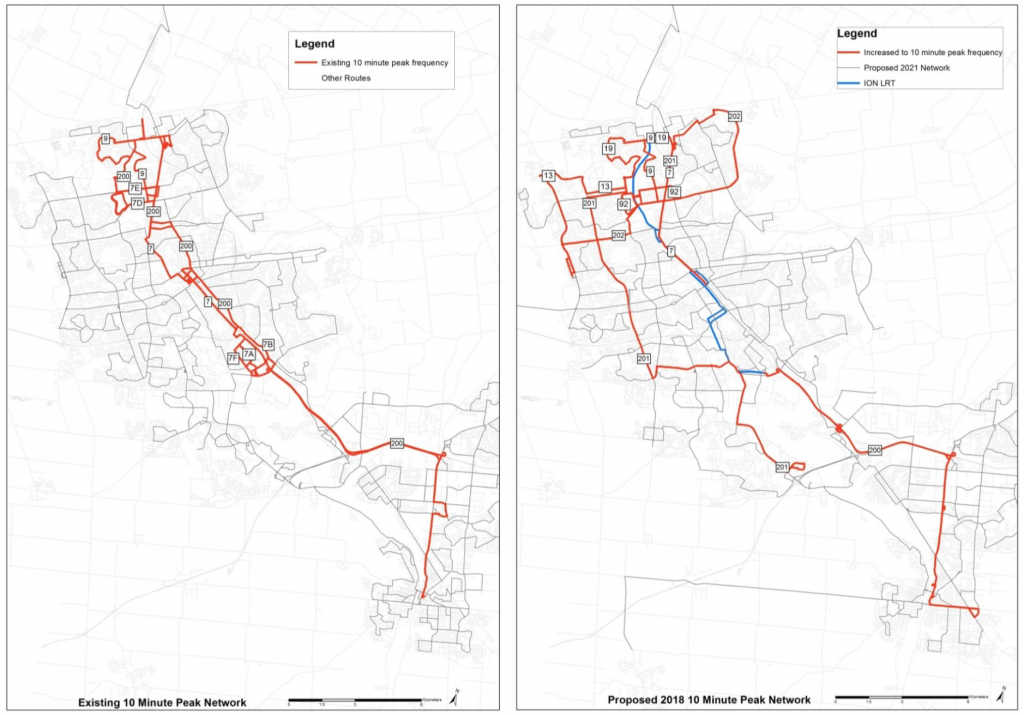Imagine a gate at the end of your driveway that opens only once every 30 minutes. How would that affect you?
We tend to think of trips by car in terms of how much time they will take. So it’s natural to compare transit by the same yardstick. How long will this trip take by bus compared to car? Is a train that takes 44 minutes to travel 18km fast enough? No question: fast transit is good.
But frequent transit is better. Frequent transit means being able to travel when we want. But this is often overlooked. It may even be overlooked in the next GRT business plan. But more on that in a moment.
There is very likely a bus stop close to you. It may take you someplace you want to go, but in all likelihood, a bus shows up only every thirty minutes (or worse.) If you commute at the same time every day, and you can adjust your schedule to fit, this might just be enough. But what if you have to travel at an unexpected time? What if you need to make a transfer to get to your destination? What if you’re delayed at work by ten minutes, or want to make a stop on the way home? An infrequent bus is very inflexible.
Low frequency transit attracts low ridership. Transit that runs at high frequency, with headways (time between vehicles) of less than 10-15 minutes, is much more attractive. People know that there will always be a bus or train coming along shortly, and that means they don’t even need to look at a schedule. High frequency transit provides freedom of movement that makes it a much more compelling alternative.
As the next GRT business plan gradually moves towards a grid network of more direct routes that criss-cross each other (and are also more direct and faster), frequency becomes of paramount importance. Grids make transferring more important, and unlike the former hub-and-spoke model, not all transfers will take place at a terminal between routes with synchronized schedules. If you are transferring from one route to another, the amount of time spent waiting at the transfer point is minimized by increasing frequency.
Many of Grand River Transit’s bus routes run every 30 minutes or worse, making transfers impractical and risky and spontaneous travel very inconvenient. The iXpress bus network aims to provide faster travel across the region, with connection points to other routes and with ION light rail. This network will need higher frequencies to succeed.
Unfortunately, the interim report on the next GRT business plan discuses frequent service as mainly being increased for peak periods. While that’s important to avoid overcrowding on key corridors at rush hour, for transit to be truly useful to people, core routes will need to do better than 30 minute headways during the mid-day, evenings, and weekends. It also limits the benefits of frequency to the areas of highest demand, namely around the universities and the central transit corridor. Based on what we’re seeing in this report, outside these areas, few would realize the benefits of frequent service.
The peak frequent service map is also very limited in its utility to riders trying to understand the system, as it only reflects the quality of service during a couple of hours on weekdays – at all other times, this map would not tell you what kind of service to expect. A Frequent Service Map highlighting which routes had better than 15 minute service throughout the day, into the evenings, and during weekends and summer months, would be much more useful than a map that shows only 10 minute service for brief moments in time.
Of course, we don’t have this map, because we don’t have true frequent service in most of the Region. But imagine if we did. What if GRT moved all their iXpress routes to a minimum 15 minute service standard? Across all three cities, people would know they can travel quickly and confidently.
These steps will draw many more riders to Waterloo Region’s transit system, by providing them with reliable service, and freedom of movement whenever they need it. And this is much more important than a few minutes of travel time.
Take action: use our councillor contact form to ask the Region to commit to a frequent network vision for GRT.
To hear your feedback on the next GRT business plan, the Region is hosting two public consultations:
Thursday, September 22, 2016
Drop in anytime between 5 – 8 p.m.
Lions Arena
20 Rittenhouse Road, Kitchener
GRT Routes 3, 12, 22 and 201 iXpress
Thursday, September 29, 2016
Drop in anytime between 5 – 8 p.m.
Waterloo Memorial Recreation Centre,
2nd Floor, Hauser Haus
101 Father David Bauer Drive, Waterloo
GRT Routes 5, 8, 12 and 200 iXpress
Come and show your support for a complete frequent service network in Waterloo Region.




